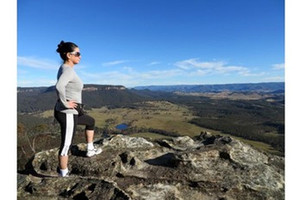
We're both gadget freaks and lovers of cool travel accessories, and there's nothing like trying out a new digital camera while on a romantic getaway to new holiday destinations. We're also unashamedly massive fans of Canon, and with few exceptions, all of UltimateTravelMagazine.com's photography has been produced by one or more of its cameras including our beloved EOS 5D.
(Check out our latest holiday competition where you have a chance to win a Canon PowerShot).
So you can imagine our delight when we were invited to review a new model, the PowerShot SX500 IS. It's billed as the world's lightest 30x zoom camera, and it hit the stores in Australia just recently. And from our personal experience using it on our trip to New Zealand, it packs quite a punch for a unit of such a diminutive size.
Straight off the bat, although it is small its size and shape is that of a scaled down SLR, so it's not a camera you can slip into a shirt pocket. That said, however, it is small enough to fit into the palm of your hand, making it a good size for a loose pocket or even a small handbag. It also has a detachable lens cap which you can hook up to the camera using a thin strap to avoid loss, and as a bonus you can shoot movies in HD if you desire.
There are so many features on this camera it's quite impressive, but for most amateur enthusiasts the basics perform sufficiently well to produce lovely images. You switch the unit using a button on the top, and there's a dial with various settings for Auto, Manual, Video etc. The flash can be set to be automatic, but to "force" it in brighter light settings, you can simply lift the arm to engage it.
Key features of this camera include a 30x Optical zoom Canon f/3.4-5.8 lens equivalent to 24-720mm in 35mm, a 60x ZoomPlus equivalent to 1440mm in 35mm, a DiG!C 4 processor, a 16MP CCD Sensor, a 3.0” LCD 461,000 dots, Intelligent IS, and an Image Stabiliser.
The question, however, is how does it perform? The answer is very well, even in tricky situations. We shot a range of images on a day in Wellington in near perfect weather (see the holiday destinations gallery here), which was rather too easy. Then we boarded Holland America's Oosterdam for a cruise back to Sydney, which provided plenty of additional opportunities to put the camera through its paces.
We shot images indoors without flash, with flash, and took it on several land-based excursions. The most challenging of the latter was a great opportunity to test the powerful zoom on a catamaran boat trip to the famous Hole in the Rock, in the scenic Bay of Islands.
If you've ever used a zoom lens before, you'll know that shooting something a long way off can be tricky in terms of stabilising the camera and getting a focussed, clear image. Add a moving, bobbing boat to the equation and you have even more hurdles to overcome. The camera, however, performed really well producing some excellent long distance images which were focussed and clear. I am not a fan of shooting with cameras without a viewfinder, but the large and super sharp LCD made composing and executing images easy.
What else? The camera is supplied with one battery and a charger and the power lasted well, and the battery recharges quite quickly, but it's always a good idea to have a spare for longer trips just in case. The media it uses is an SD or SDHC card which isn't supplied - a slight drawback for the price perhaps - and it comes with with a strap, a USB cable to connect to a computer, and a CD with information, software and manuals.
All-in-all, this isn't one of the cheapest cameras on the market today, but true to the claims it is light, powerful and produces excellent quality images. As pro photographers, we wouldn't hesitate to have one in our collection, not just for fun but as a viable backup, or for times when discretion is required, or a small unit essential.
- By:
- Joanna Hall
















